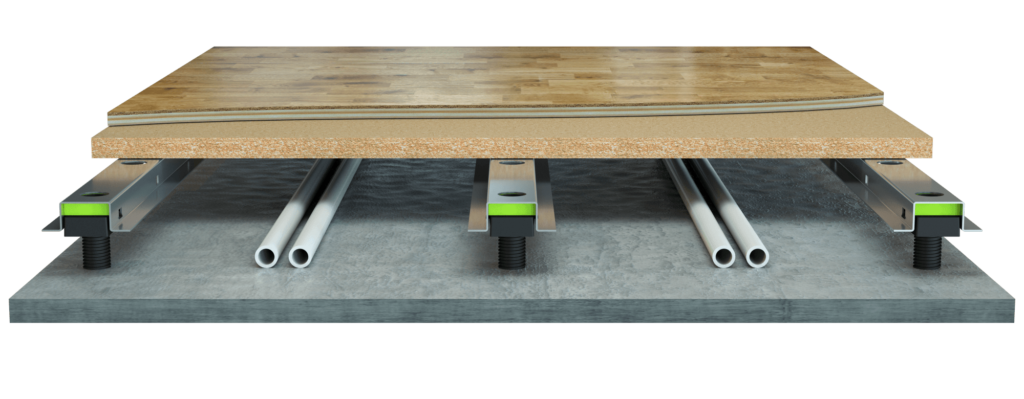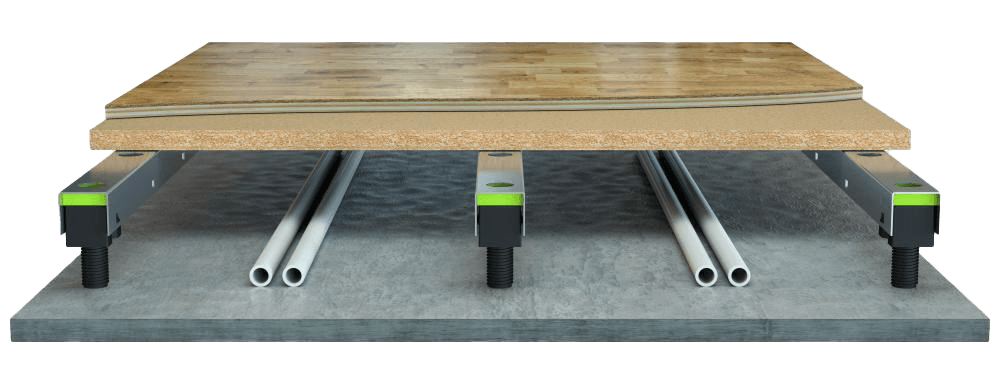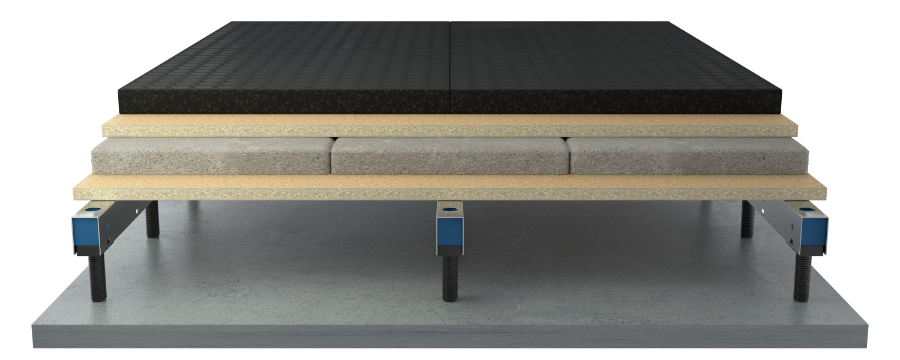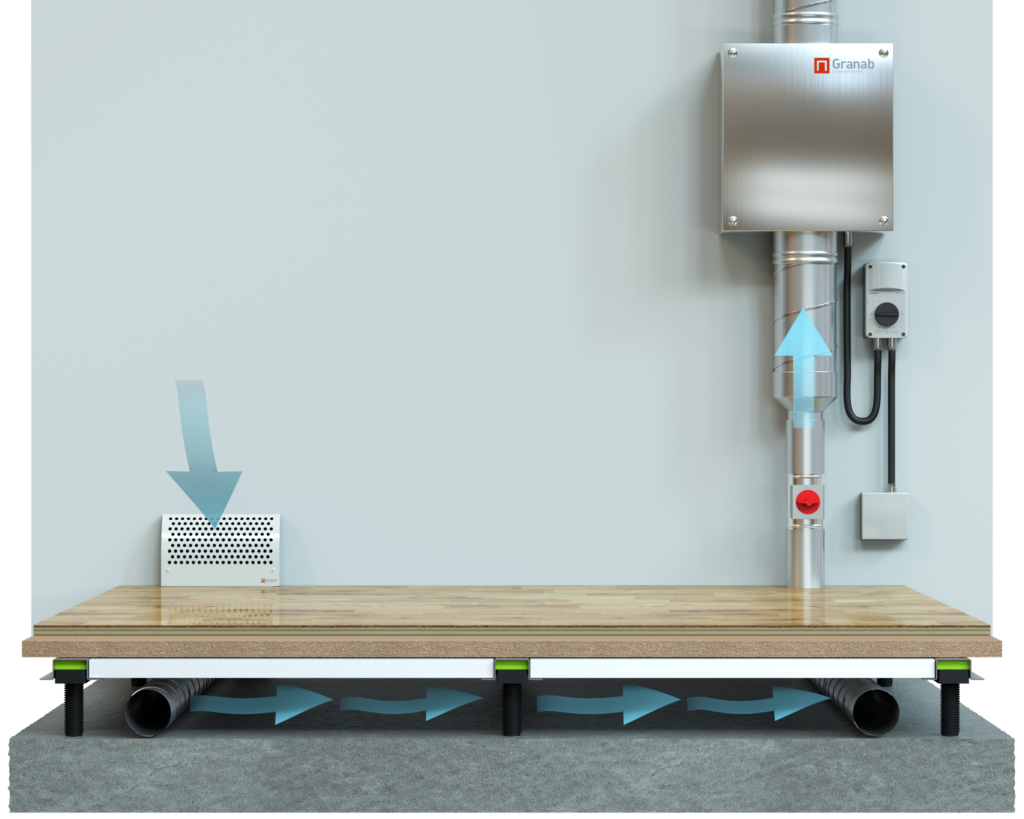Structure-borne sound insulation
Structure-borne sound insulation is important for creating comfortable living environments in modern buildings. When vibrations from installations, ventilation and other sources are transmitted through the building structure, disturbing noises arise that negatively affect the experience. Effective structure-borne sound insulation minimises these problems and meets today’s high standards for sound environments.
Structure-borne sound and vibrations – why do they occur?
Structure-borne sound occurs when vibrations from various sources travel through building materials such as concrete, steel and wood. These vibrations can come from washing machines and dishwashers that vibrate, toilet flushing and water pipes in the walls, lifts that start and stop, and ventilation fans on roofs or in basements. Underfloor heating systems and circulation pumps for hot water also create vibrations that travel through the building. When the vibrations reach other parts of the building, they are converted into audible sound.
The problem is exacerbated by the fact that modern buildings are often constructed with lighter structures, such as CLT and hollow core slabs, and more technical installations than before. Therefore, structure-borne sound insulation is essential for achieving a good sound environment, especially at low frequencies that are difficult to dampen using traditional methods.
Regulations and requirements for structure-borne sound insulation
The Swedish National Board of Housing, Building and Planning’s building regulations (BBR) set clear requirements that the acoustic environment in buildings must effectively protect residents from noise. To achieve better acoustic conditions, sound class A or B is recommended in accordance with SIS standards SS 25267 for residential buildings and SS 25268 for commercial premises.
The standards set specific requirements for sound insulation at low frequencies, as these have been shown to be crucial to the subjectively perceived sound environment. In practice, residential buildings are usually designed for sound class B in order to meet customers’ expectations of modern living comfort.
Measurement and evaluation of structure-borne sound insulation
To ensure that structure-borne sound insulation actually works in practice, measurement and evaluation are required. There are various methods for measuring structure-borne sound, using acoustic measurements and calculations to analyse how vibrations spread through the building. The measurements often cover a wide frequency range, from low frequencies of 10 Hz up to 500 Hz, as different types of structure-borne sound and vibrations can occur in different parts of the building.
By using customised measurement methods for different types of vibrations and structure-borne noise, it is possible to identify any deficiencies in the insulation and suggest improvement measures. This ensures that the building meets both regulatory requirements and the residents’ expectations for a quiet and comfortable environment.
Granab Subfloor System – proven solution for structure-borne sound insulation
Granab subfloor System offers a proven effective solution for structure-borne sound insulation. The system acts as a structure-borne sound complement to the building frame and comfortably meets the sound requirements of SS 25268. The unique suspension system eliminates the transfer of vibrations between installations and the building frame.
Granab is designed and optimised according to the unique conditions of each project. In acoustically challenging projects, we take into account the setup frequency and the natural frequency at which the vibration insulation should begin to perform. The quantity and type of Sylodyn damping elements in the Granab system are designed by us.
Summary
Effective structural sound insulation requires system solutions that break the path of vibrations through the building structure. Granab Subfloor System offers documented performance for various applications and meets today’s requirements for sound environments, regardless of the choice of structure CLT or hollow-core slab.
Contact us for project-specific advice and technical documentation customised to your construction project.
Frequently asked questions about structure-borne sound insulation
Our systems






Sports floors
Eight unique Sports floors able to accommodate natural frequencies that are as low as 10Hz.
Read more
Environmental certification
Granab works actively to reduce environmental impact and has certifications that confirm our commitment to sustainability. All our subfloor systems have Environmentally Product Declarations (EPD).

